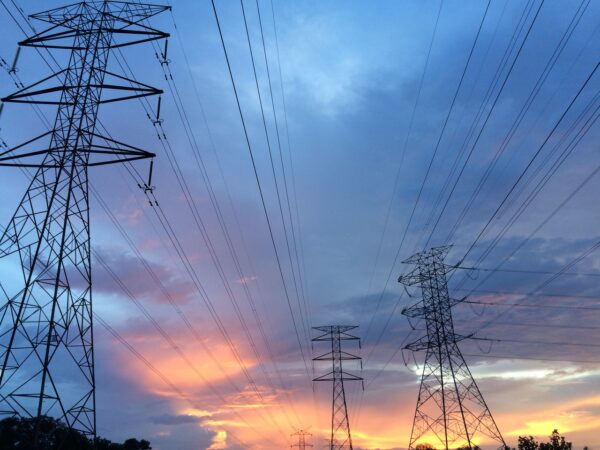By Will Wade and Francesca Maglione
U.S. consumers from New York to California are experiencing “rate shock” on their latest utility bills as the global energy crisis drives up prices for fossil fuels, forcing tough financial decisions for families getting squeezed on all sides.

The increase is becoming a problem for Dave Croyle, 75, a San Diego retiree with multiple health issues that keep him largely housebound. In the past his power expenses were about $250 a month, but his most recent bill shot up to $508. He lives on a fixed income of Social Security and pension payments and said the higher costs mean his expenses are now exceeding his earnings, so he has to draw on savings to cover the balance. He’d like to have his home health aide visit twice a week instead of once, but he just can’t afford it when utility costs are piling up.
“It’s not where I want to be spending my money — on my electric bill,” Croyle said.
The strain from electricity costs comes at a time when U.S. inflation is already running at a 40-year high. Food prices are climbing, gasoline is surging and housing expenses are up. All that is taking a bigger bite from consumers’ wallets, especially for low-income people who were already disproportionately affected by the pandemic, according to John Drew, chief executive officer of the non-profit group Action for Boston Community Development.
“The roof is falling down on lower-income people,” Drew said.
Nationally, about 21 million customers were behind on their utility bills in December, according to the latest data from the National Energy Assistance Directors Association in Washington. That number is down from a year ago as some critical public assistance programs helped to ease financial pressures. But now, many of those programs have ended, exacerbating the burden just as energy prices are soaring, said Mark Wolfe, executive director of the group. The Biden administration’s expanded child tax credit, for example, expired at the end of 2021.
“Lower-income families have less discretionary income in their budget, so when one cost goes up, something else has to give,” Wolfe said.
Bills are likely to stay high. U.S. natural gas prices are still soaring, and tight global supplies means there is little relief in sight. Consumers typically use less power in the spring, since milder weather means they neither have to crank up the heat nor the air conditioning. But electricity rates themselves will likely be up because of the rising fuel costs.
People are frustrated with their local utilities, but the companies say it’s not really their fault. New York’s Consolidated Edison Inc., for example, doesn’t generate electricity, and by law it doesn’t make a profit from the power it delivers to customers. It’s charging people more this year because it has to pay more for electricity.
The typical ConEd bill in January was about $124 for customers in New York City using 300 kilowatt-hours, according to company data, up 23% from a year earlier. The higher bills have drawn the ire of both New York Governor Kathy Hochul and Attorney General Letitia James, and prompted the company to adjust the timing of its billing cycles in an effort to mitigate pricing volatility.
Power prices in the U.S. are higher thanks to a conflux of global events.
As the world’s economies started to recover from the pandemic last year, electricity demand spiked. Meanwhile, unusual weather patterns meant there was less wind power in Europe. Drought also limited hydro power in some parts of the continent as well as in California, while Asia saw tighter markets for coal and natural gas. All those factors came together to create a mad scramble for energy supplies and sent prices soaring.
Now, Russia’s invasion of Ukraine is extending the rally. Russia is a huge exporter of natural gas and oil, so any extended disruptions to its supplies will mean energy prices will likely stay high.
Natural gas generates about 35% of U.S. power, and prices for the fuel have doubled in the past year. Demand and prices also soared for coal, which accounts for about 22% of the electricity mix in the country.
On top of higher fuel prices, people are using more energy this year because it’s been colder. In New York City, the average monthly temperature in Central Park in January was 30.3 degrees Fahrenheit (-1 Celsius), compared with 34.8 degrees in 2021.
“We understand the hardship that higher energy bills can cause for our customers,” ConEd CEO Timothy Cawley wrote in letter last month to the state Department of Public Service.
More than 1.3 million New York City households are 60 days behind on utility bills, about 20% of the city, according to Public Utility Law Project.
Annie Cross, a bus driver in Mt. Vernon, New York, is trying to figure out how to shift her spending to make sure she can keep the lights on and still have enough to fill up her car. She typically pays about $100 a month in the winter to ConEd, but this year she’s seen a $40 increase.
“I have to keep a budget in order to make sure I have gas for the car to go to my job. Like serious budgeting,” said Cross, 61. “I’m going to have figure out where I can take the extra money from.”
More stories like this are available on bloomberg.com.




